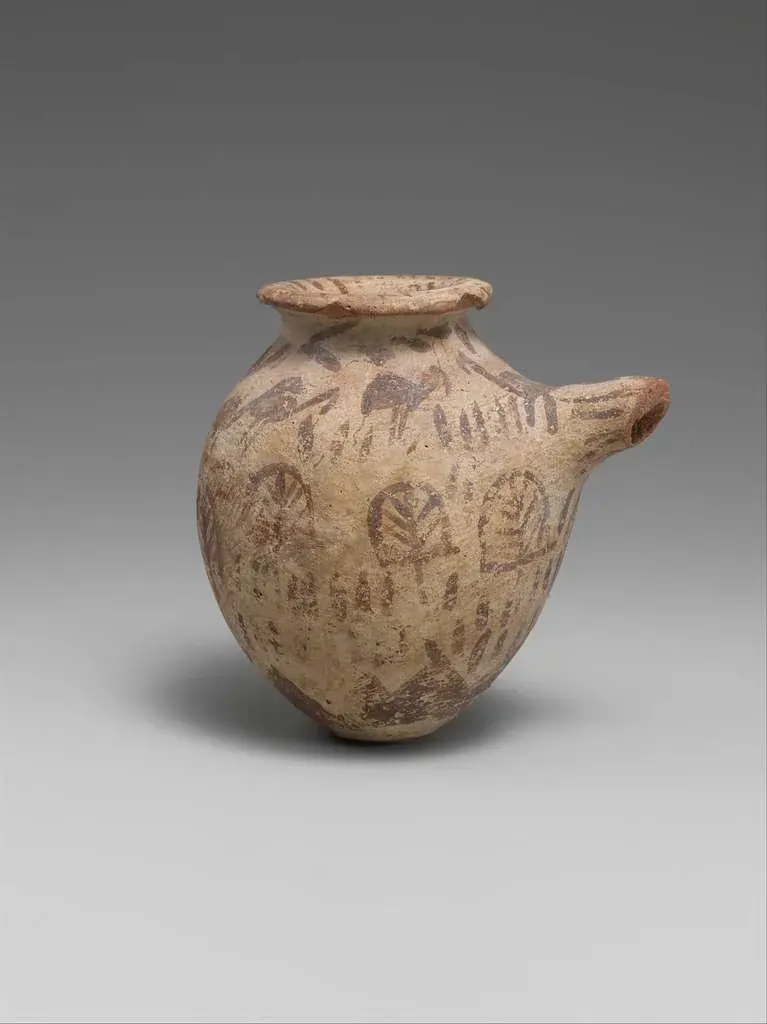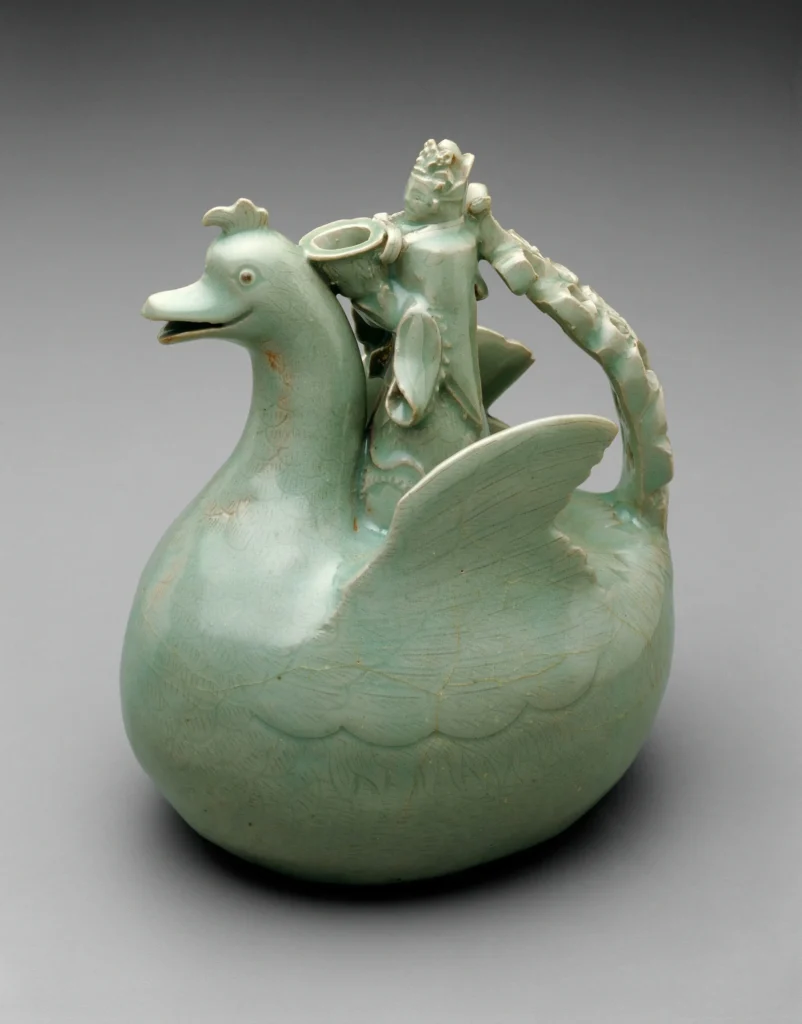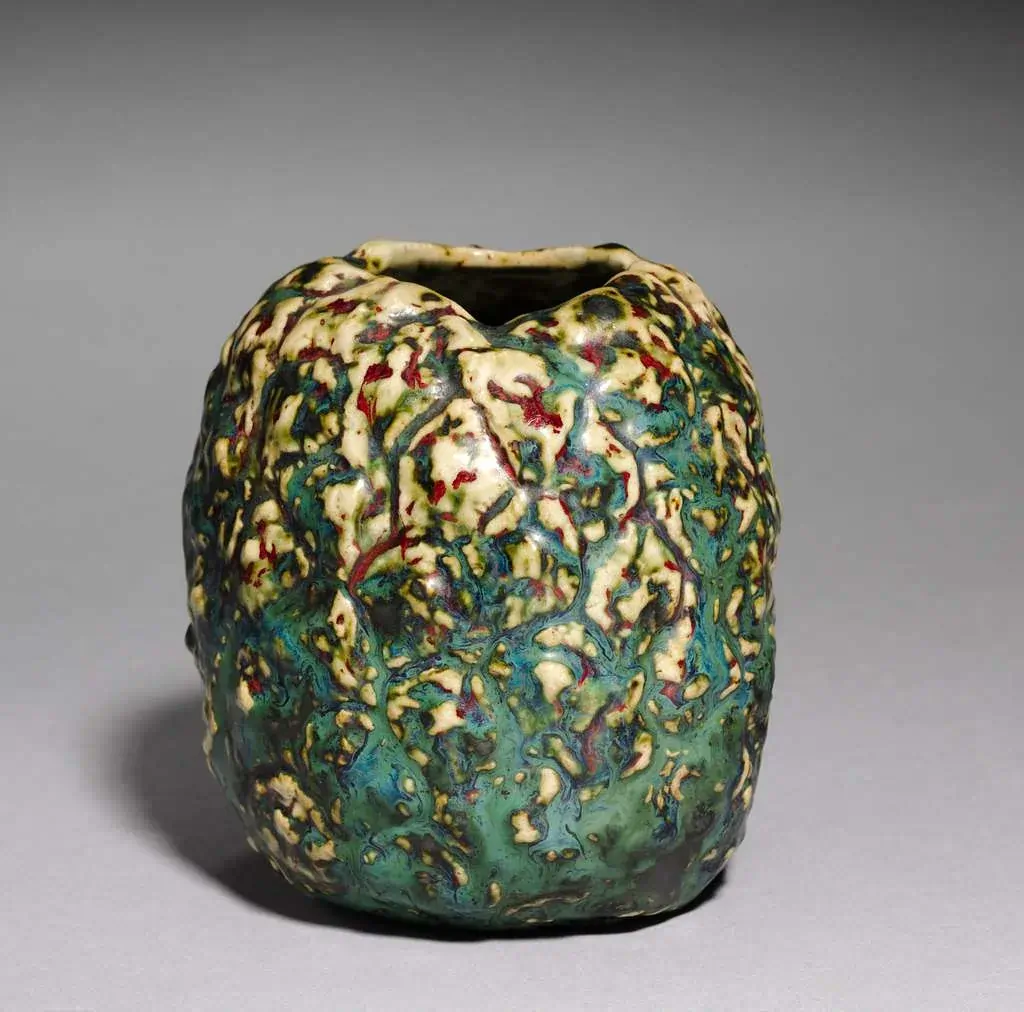Ancient societies have bequeathed to us an abundance of relics; however few are as versatile and revealing as the vessel. An innovation that reshaped the storage and serving methods of liquids by our forebears over 5000 ago.
Spouted vessels, like the bridge vessel designs have been unearthed in various ancient civilizations ranging from Mesopotamia to the Aegean region. Our studies and excavations have revealed that these vessels had both functions and carried cultural and ceremonial meanings. In this investigation we will delve into their development over time how they were made, their value and the archaeological discoveries that shed light on their significance, in ancient societies.
Table of Contents
ToggleEvolution of Spouted Vessel Design
It is possible to see the evolution of spouted vessels starting in the Harappan civilization where the use of terracotta spouts can be considered as the birth of this creative concept. The development of these vessels can be considered as one of the earliest solutions used by mankind to regulate the flow of the liquid.
Early Prototypes and Development
The present study reveals that the Maya created specific spouted vessels by the Middle Preclassic period (1000 – 400 B.C), which became diagnostic of their assemblage. These vessels were particularly special for their function in serving the chocolate drinks and this is supported by the detection of theobromine in the vessel residues from Colha in Belize.
Regional Variations and Innovations
We’ve discovered remarkable regional diversity in spouted vessel designs across ancient civilizations:
- Iranian Innovations: The Late Bronze Age to Early Iron Age saw the emergence of distinctive “bird beak spouts” in Iran, featuring unique waterfowl-inspired designs
- Moche Contributions: The development of stirrup spout vessels in the early 2nd millennium BCE marked a significant advancement in ceramic craftsmanship
- Mughal Elegance: The surahi, perhaps the most refined version of spouted vessels, emerged during the Mughal period specifically for pouring sura
Technical Advancements through Ages
Spout designs have evolved over time with purposes, in mind. For example; Indian artisans crafted spouts for water and wider ones for thick liquids like ghee while the Maya showcased their creativity in vessel construction by adding unique vertically placed spouts parallel, to the central axis to create a frothy surface on chocolate beverages.
The design of vessels, with bridge spouts seen in Persia and Crete during the early Iron Age showcases a notable technical progress back then. This inventive concept included a link connecting the spout and filling opening. Revealed a grasp of fluid dynamics, in ancient civilizations.
Manufacturing Techniques and Materials
In the course of this study on the ancient pottery, it has come to our knowledge that the creation of spouted vessels is a very delicate and a very precise process. The process starts with the selection of the right material and ends with complicated firing process.
Clay Selection and Preparation Methods
We’ve found that potters traditionally collect their clay within a 3-kilometer radius of their workshops. The preparation process involves several critical steps:
- Levigation to remove impurities
- Thorough drying or soaking
- Hand sorting of coarse materials
- Addition of temper materials when needed
- Careful homogenization through kneading
Construction and Forming Processes
In making the spouted vessels, the two techniques that are usually employed include coiling and wheel throwing. In the construction of the spout, it was noted that the ancient craftsmen would first create a flat disk with a central depressed area to form the spout which was about 1/2 inch thick. The body of the vessel was created with the coiling technique and the surface of the walls was beaten into shape with a paddle and anvil.
Firing and Finishing Techniques
In our study we found two ways of firing pottery vessels. Using flames or kilns which greatly affect how the vessels look and how long they last in use. We learned that controlling the temperature during firing is key. Traditionally potters kept an eye on this by looking through openings, in the kilns or by using draw trials.
In the process of finishing surfaces, on objects like pottery vessels, from the Paracas tradition is often marked by signs of painting done after firing the pottery in a kiln or oven heat treatment method. The skilled craftsmen of that era would blend mineral pigments with plant based resin binders to form enduring designs on the surface of the vessels. The overall visual outcome of these vessels was significantly influenced by three elements. The temperature at which they were fired the length of time spent in the firing process and how long they were allowed to dry before being placed in the kiln or oven for firing.
Cultural Significance and Uses
Based on our research of the various artifacts, it has been found that spouted vessels had various uses in different cultures. It is not just as a tool but it serves various purposes in the religious, social, and practical aspects of life.
Ceremonial and Ritual Functions
On the basis of the evidence we have discovered, it is quite evident that spouted vessels were crucial in rituals associated with religion. In the Iron Age funerary customs the vessels were utilized for pouring different kinds of liquids such as bovine milk and blood based drinks. The long and delicate spouts of the vessels and the absence of handles indicate that the vessels were probably gripped with both hands when pouring the liquid during some ritual.
Domestic and Practical Applications
In everyday life, we’ve identified several practical applications for these vessels. They served as containers for various substances including:
- Olive oil for ancient oil lamps
- Wine storage and serving
- Chicha, a corn beer still produced in Peru today
Social Status Indicators
In our study findings indicate that spouted containers were frequently used to showcase social status distinctions. It has been observed that vessels, in red hues were specifically designated for high status funeral rites. The refined shapes and limited availability of vessels hint that skilled potters crafted them exclusively for customers. By means of trade routes connecting regions such as Sardinia, to Syria and Anatolia to Nubia these vessels gained reputation as items.
During the time of the Moche civilizations reigns and discoveries unearthed that intricate portrait vessels adorned with faces and detailed textile patterns held significance among the people. The act of gifting these vessels from upper class individuals to those of status not only served as a gesture of strengthening political ties but also played a crucial role, in reinforcing social hierarchies. Evidence suggests that alongside objects and luxurious clothing found in burials points, towards the importance these vessels held in upholding societal divisions.
Archaeological Evidence and Findings
Our studies of archaeology have uncovered details, about spouted containers through revolutionary finds and inventive dating techniques.
Major Archaeological Discoveries
We have discovered findings at important locations. Our analysis of the substances, in containers at Rio Azul in Guatemala validated the existence of Theo bromine and caffeine presented evidence of their utilization for consuming cocoa. At Colha, Belize, the finding of quantities of Theo bromine in burial vessels, from the Middle and Late Preclassic periods was notable.
Some of our most significant findings include:
- Vessels dating from 1000-400 B.C. in Maya lowlands
- Specialized forms for ritual and social activities
- Evidence of widespread distribution across varied settlement types
Dating and Authentication Methods
We have evolved the process of pottery dating with several techniques. At the University of Bristol, our team has come up with a way of directly dating pottery that is about 8000 years old. This technique requires the analysis of fatty acids which are still present in the pores of the vessel and thus offers high accuracy – sometimes even to the year of death of an individual.
Distribution Patterns and Trade Routes
In our research, on archaeology we have mapped out trading connections. The find of the Uluburun shipwreck displayed a load consisting of copper bars from Cyprus, ivory from Africa and amber from the Baltic Sea. We have pinpointed routes, for transporting goods from the Mediterranean to the East with indications of spouted containers being exchanged along these pathways.
Our discoveries, at the Sialka site have shown that the spouted containers from the Iron Age had a mix of dairy from animals and fats from carcasses in them; indicating they were likely used for pouring concoctions, in funeral ceremonies this revelation has deepened our insight into how these vessels were used ceremonially in various cultures.
Conclusion
Spouted vessels are one of the brightest examples of how people’s creativity developed throughout the history of humanity for more than five millennia. Based on our investigation, it is possible to state that spouted vessels served not only as a useful tool in the everyday life of people, but also played an important role in the ceremonial life of the society.
Our investigation has revealed several key findings:
- Advanced manufacturing techniques requiring exceptional skill and precise methods
- Widespread cultural significance across multiple civilizations
- Complex trade networks spanning continents
- Deep ceremonial importance, particularly in funerary rituals
- Social status indicators through specialized designs and materials
Evidence, from discoveries keeps adding to our knowledge about these artifacts. Developments, in dating methods now enable us to track their development than ever before. Chemical analysis helps us uncover what these vessels contained and how they were utilized. Stories told by Maya chocolate vessels Iranian bird beak designs and Mughal surahs all showcase the narratives of ingenuity and cultural significance.
These ships are not containers; they stand as symbols of the technological progress and creativity of our forefathers as well, as reflections of their cultural refinement and artistic vision. Their exploration offers us knowledge about trade networks and societal organizations and sheds light on the beliefs and rituals of earlier times—serving as essential resources, for comprehending the evolution of human civilization.
FAQs
Q1. What was the primary function of spouted vessels in ancient cultures? Spouted vessels served multiple purposes in ancient societies, including practical uses for storing and pouring liquids, ceremonial functions in religious rituals, and as indicators of social status. They were used for serving drinks like cacao, storing olive oil and wine, and pouring liquid offerings in funerary ceremonies.
Q2. How did the design of spouted vessels evolve over time? The design of spouted vessels evolved from early prototypes in the Harappan civilization to more sophisticated forms like the Maya’s specialized spouted vessels and the Iranian “bird beak spouts.” Technical advancements included the development of bridge-spouted designs and variations in spout width for different liquids.
Q3. What materials and techniques were used to manufacture spouted vessels? Spouted vessels were primarily made from carefully selected and prepared clay. Craftsmen used techniques such as coiling and wheel-throwing for construction. The vessels were then fired using open firing or kiln methods, with some cultures applying post-fired painting techniques for decoration.
Q4. How do archaeologists date and authenticate ancient spouted vessels? Archaeologists use various methods to date and authenticate spouted vessels, including a revolutionary technique developed at the University of Bristol that allows direct dating of pottery up to 8,000 years old. This method analyzes fatty acids trapped within vessel pores, providing highly accurate results.
Q5. What can spouted vessels tell us about ancient trade and cultural exchange? Spouted vessels provide valuable insights into ancient trade routes and cultural exchanges. Archaeological findings, such as the Uluburun shipwreck, reveal extensive trade networks spanning from the Mediterranean to the Far East. The distribution of these vessels across different regions indicates widespread cultural interactions and the exchange of goods and ideas in ancient times.



